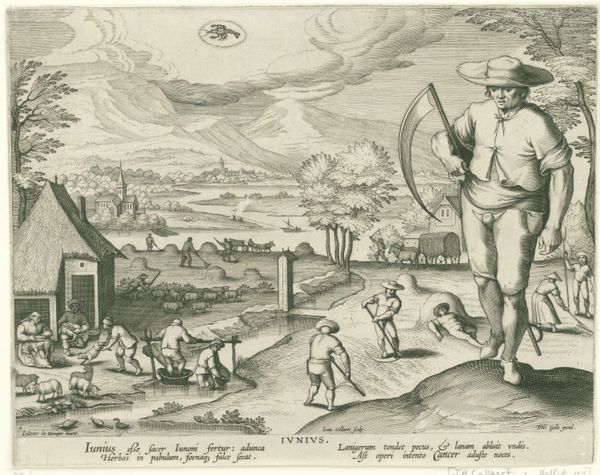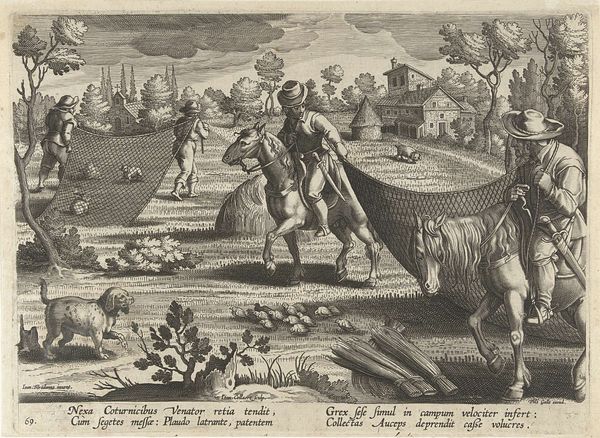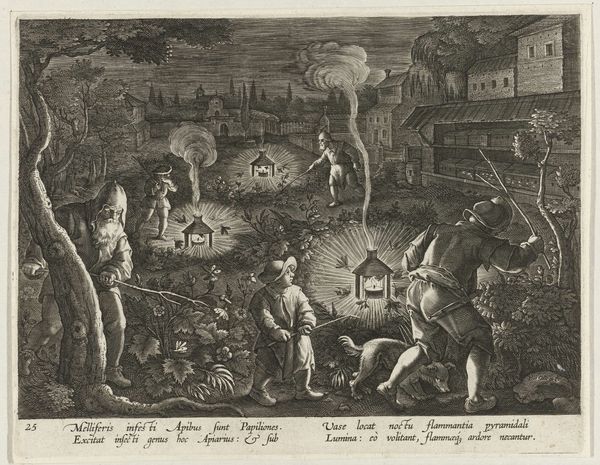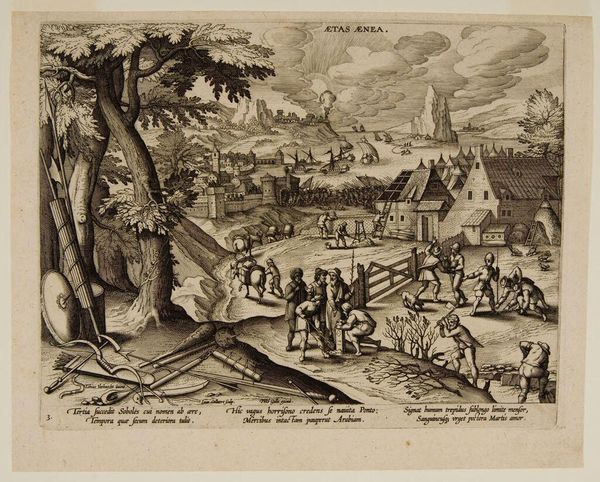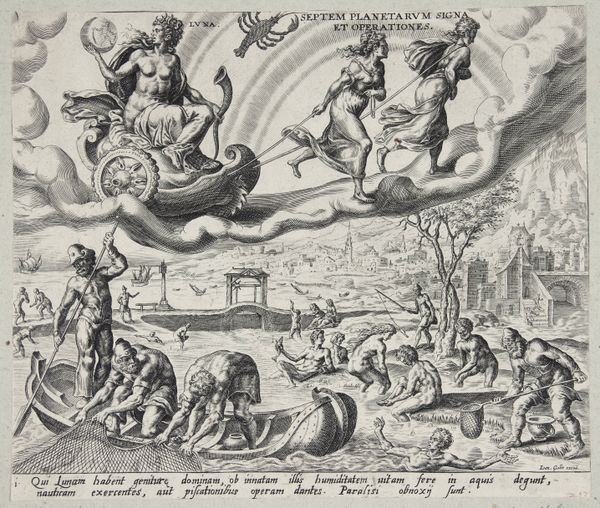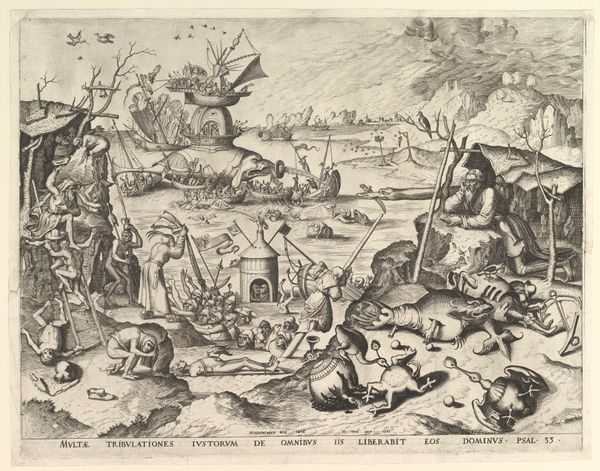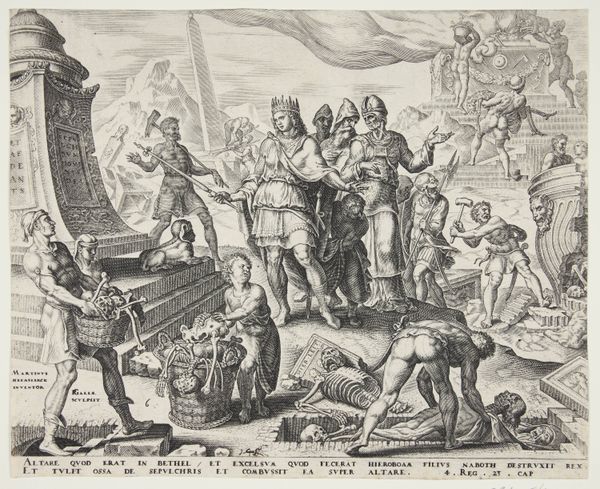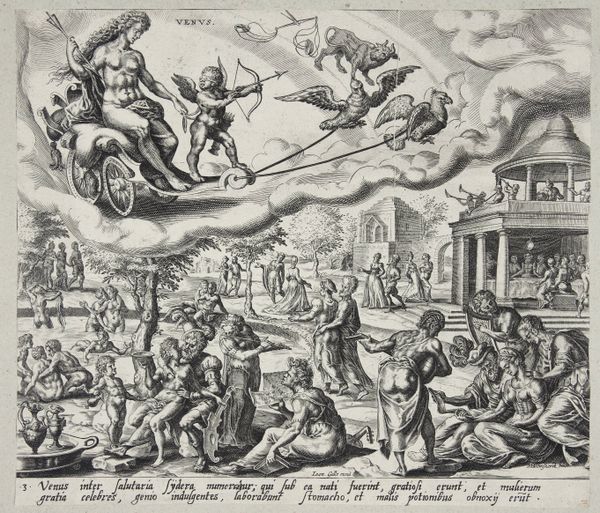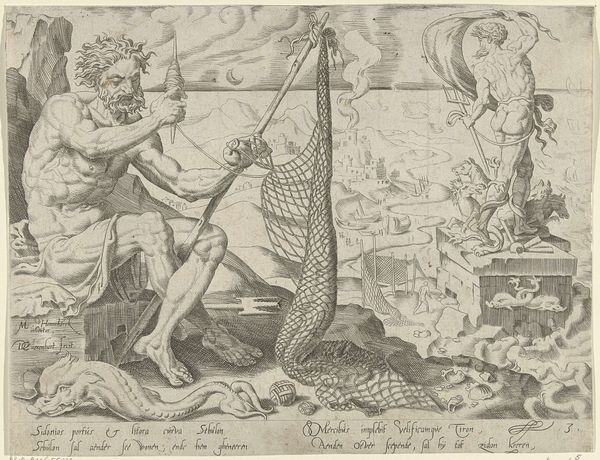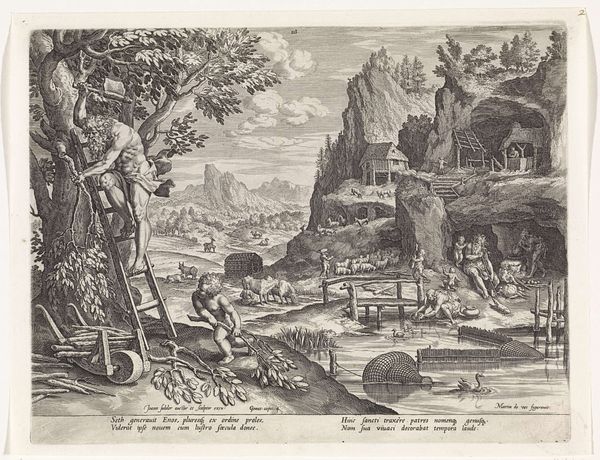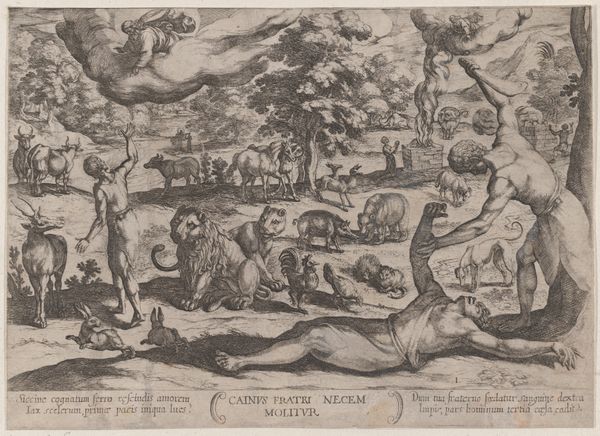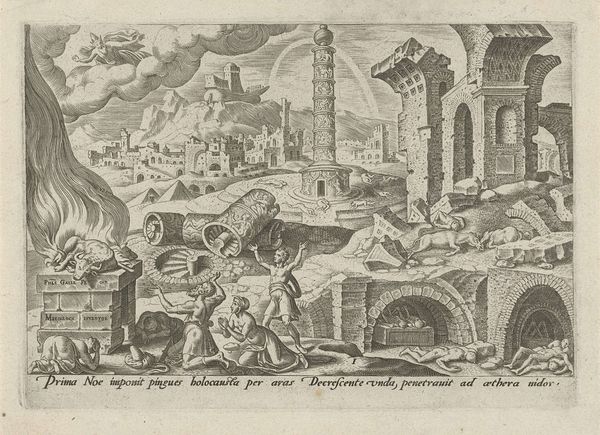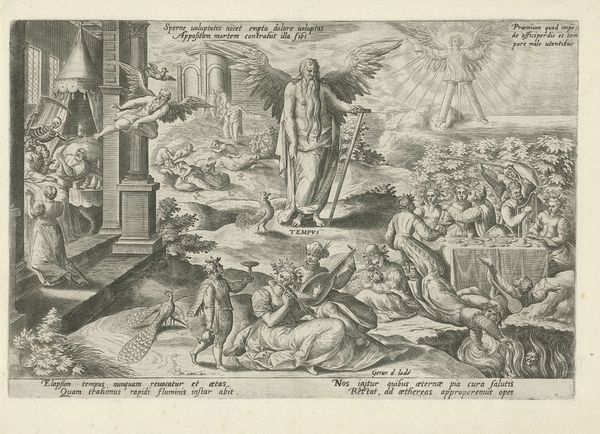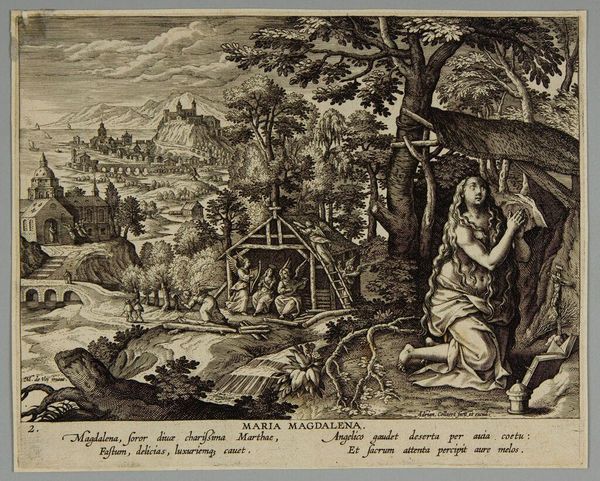
print, engraving
# print
#
old engraving style
#
landscape
#
genre-painting
#
history-painting
#
engraving
Dimensions: height 205 mm, width 252 mm
Copyright: Rijks Museum: Open Domain
Editor: Here we have "Juli," an engraving by Jan (II) Collaert, created sometime between 1586 and 1618, now housed in the Rijksmuseum. My first impression is of how precisely rendered the entire composition is, how would you describe it from your perspective? Curator: The systematic and deliberate use of line is the most compelling formal quality of this work. Observe how Collaert employs varying densities and orientations of lines to generate texture and tonality across the entire picture plane. Notice the lines which comprise the human figures compared to the landscape, can you see how it guides the eye? Editor: Yes, there are differences in the techniques! How do these formal elements contribute to the overall meaning or effect of the artwork? Curator: The density and direction of the lines simulate light and shadow, thereby delineating form and space. The relatively higher concentration of lines in the foreground— particularly upon the laborers—suggests an emphasis on the figures' corporeal reality, their physical exertion, compared with the background that lacks those intense features, simulating atmospheric perspective. Would you agree that it brings out a grounded perspective? Editor: Absolutely, I notice that distinction now that you point it out, and can see how this enhances the grounded feeling you were describing. It’s fascinating how something as simple as lines can be used in so many ways. Curator: Precisely. The composition's effect resides within these relationships. The medium, print, makes these fine distinctions possible. An entirely different experience and expressive possibility than a drawing in charcoal. Editor: Thinking about how each choice changes how a work can be interpreted opens up entirely new areas to explore!
Comments
No comments
Be the first to comment and join the conversation on the ultimate creative platform.
